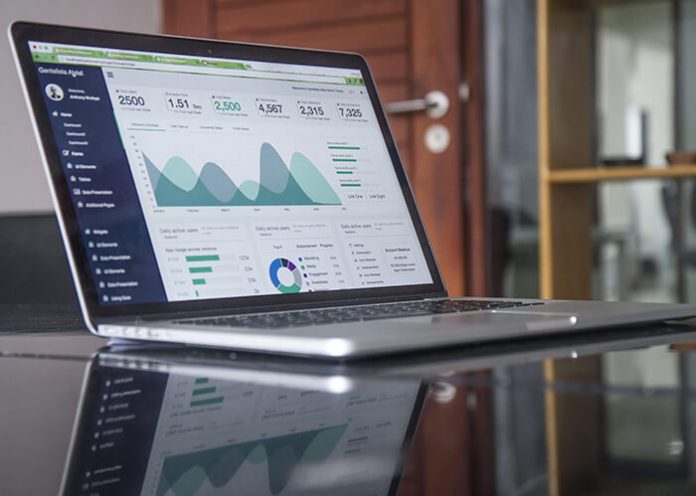Without the ability to apply e-commerce data, these rich numbers become an untapped resource for many businesses. Here’s how to do it.
“Big data” is a key concept that most everyone has encountered by now.
But in the e-commerce world, a vast number of businesses have not yet fully immersed themselves in the use of this big data to furnish key insights and generate profitable adjustments.
In fact, according to the retail research firm Edgell Knowledge Network, 80 percent of retailers understand this key term, but less than half of them have a solid understanding of how to apply it to their particular business practices.
Part of this is a result of the challenge posed by the act of sorting through that big data. Parsing out quality findings from the volume, variety, and value of such a large amount of collected data can be quite an undertaking.
Where the main issue once rested in the lack of availability and easy collection of data, it now rests instead in the ability to quantify this data and leverage it to make measurable changes within a business.
And without the ability to apply this data, it becomes nothing more than an untapped resource for a great many businesses.
A shocking 90 percent of the world’s big data has been created in just the past two years. In light of that statistic, it’s no wonder that we’re still learning how to use it effectively.
But for e-commerce businesses, the key advantages provided by working with big data are well worth the educational effort.
Big data can bring swift and effective change if a business is savvy enough to identify key findings and willing to adjust their strategy to match.
Therefore, the question doesn’t lie in whether or not a business should take the time to apply big data, but instead, in how it can be done most effectively.
Data Types and Applications
Big data can be segmented into two types: structured and unstructured data.
Structured data is that which includes demographics such as names, addresses, age, and the like.
Unstructured data includes less discrete information such as Pinterest and Facebook posts, tweets, hashtags, and the like.
Both types of data have their value, and they can be assessed and applied in part by focusing on three major areas: pricing, identifying niche customer segments, and tailoring marketing messages.
Price Comparison
Online businesses have many advantages. Aside from requiring less on-site inventory, lowering overhead, and automating much of the sales process, they also allow retailers to adjust prices on-the-fly.
And along with the benefit of online shopping, the ability to price compare has become helpful not only for the customer, but for the savvy retailer as well.
By leveraging big data to compare the cost of retail goods across the market at large, retailers can quickly adjust their prices to be the most competitive and gain a bigger cut of the market by taking the reins and demonstrating price leadership.
Identifying New Market Segments
The amount of trackable, online data available can now offer e-commerce businesses a previously untapped advantage. By combining and leveraging both structured and unstructured data, marketing can be personalized to meet consumers where they live in the virtual world.
Gone are the days of blanket advertisements. Now marketers can target specific, personal traits of their consumers, including where those consumers live, where their interests lie, and where they spend the majority of their time online.
All of this information can help marketing teams tailor campaigns to their customer’s unique interests.
By their own volition, consumers tend to segment themselves into niche interest categories by means of their online behavior, such as following certain Instagram accounts, hashtagging, and using social media to express personal preferences.
And online retailers can help encourage consumer grouping by inspiring targeted interactions through social media channels. Setting up challenges, creating interactive campaigns, and building up new groups can help retailers build discrete, marketable niches with known tendencies.
Targeting these specific interests and tailoring marketing to take advantage of niche groups can help online retailers get the most out of their advertisements.
By identifying where and how to personalize their marketing, they can learn to pique the interest of each subsections of their customer base.
How to Harness Big Data
The value of big data to an e-commerce business cannot be overstated. But once the importance has been established, and the data has been expertly collected, the next step is to seek out assistance in analyzing this information and applying it profitably.
Seek Out an Expert
When it comes to big data, it’s best to have it analyzed by a digital insight specialist.
If you don’t have access to one of these specialists in-house, there are some incredible, third-party data collectors and analyzers that have all the tools and expertise needed to deliver high-quality research and measurement.
Mind Social Media
Although company-run social media sites can say a lot about current customers, an e-commerce business can benefit by taking a look at their industry as a whole to see what’s trending.
Fortunately there are a great many sites dedicated to analyzing social media trends.
Sites such as Google Alerts, TweetDeck, and Mention are three examples of social media monitoring entities that can help online business owners keep an eye on trending topics.
Look at Preferences
Even seemingly unrelated data can say something about a potential customers’ purchasing power and interests. A business can tap into their own user base by taking advantage of apps like SEMrush to discover customer preferences and trends.
By learning how to navigate social media and leverage current analysis and aggregation tools and companies, e-commerce businesses can take advantage of the booming resource that is big data.
You can use it to help direct your marketing strategies, personalize information, adjust prices on-the-fly, stay in contact with customers, and follow pertinent industry trends.
When it comes to business, knowledge is power. And big data has brought an enormous amount of knowledge to the table.
The next step is leveraging that knowledge to discover key insights, build competitive prices, cultivate customer loyalty, identify new opportunities, offer unbeatable support, and create a successful online marketing strategy.
Find a Home-Based Business to Start-Up >>> Hundreds of Business Listings.

















































